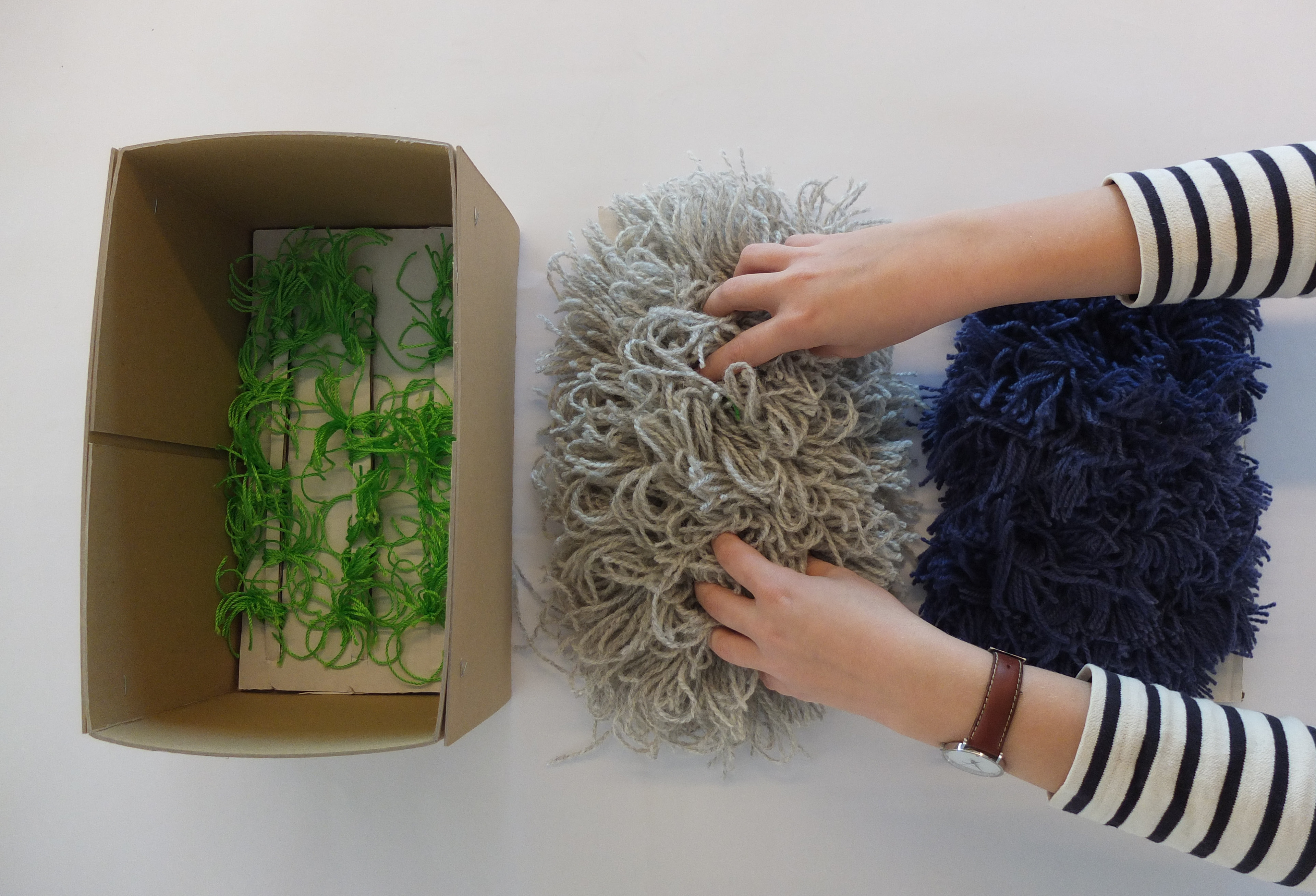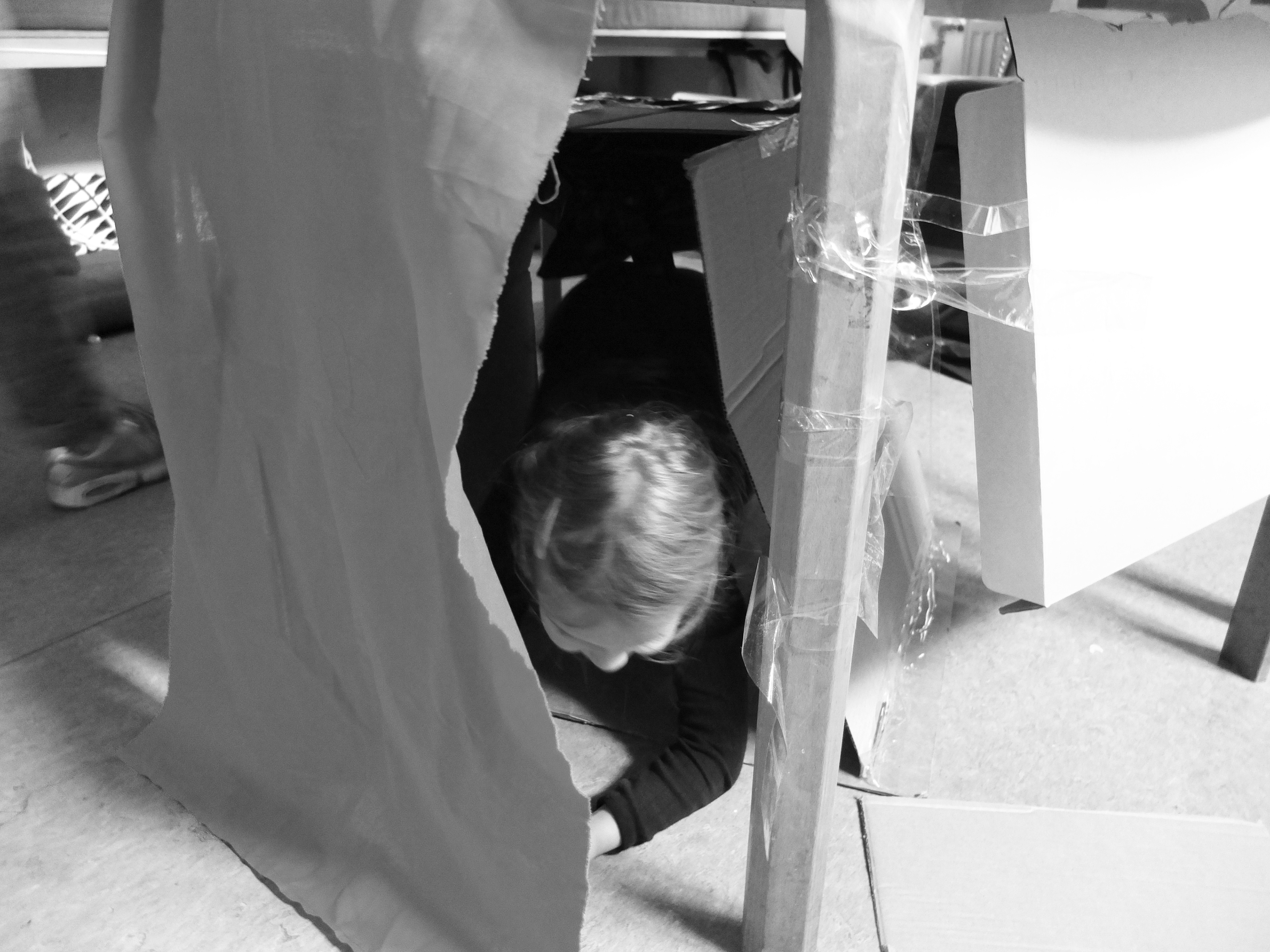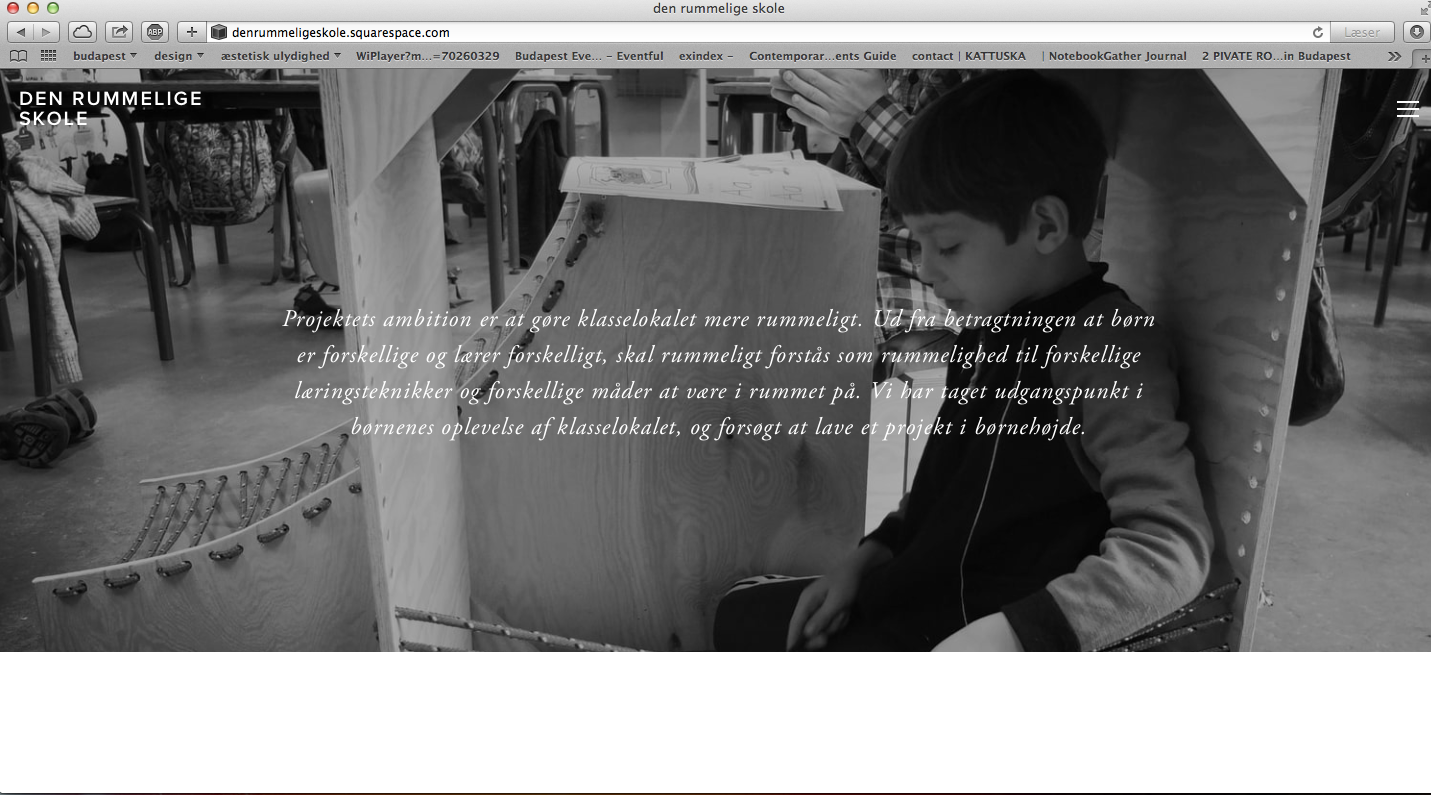The ambition with The Spacious School project was to create room for different ways of learning. That is to be understood both literally as we created new physical furniture peaces as well as in a more abstract sense. The Danish public school is often still very traditional in its furniture decoration, which often leads to a traditional way of teaching. However, children are different and learn in different ways. Therefore we used a change in the physical environment to create space for variation in teaching methods.
As the Danish public schools have limited ressources we set ourselves the challenge to design something that would only need very little funding and which could be made by the school children themselves or in collaboration with parents.
The projects was co-designed with a 1. grade, where we did three workshops with the class to get the children's inputs.



For the first workshop we designed a huge board game for the pupils to play. Here they would get different tasks as example taking a picture of their favourite spot in the classroom. The aim of the board game was to gain an understanding of how the children experienced the physical environment in the learning situation.
For the second workshop we had prepared a kit for each child. They were all asked to first draw their imaginary favourite sitting furniture for the classes. Afterwards they were asked to mold it in clay.



For the third workshop we worked with rapid prototyping, where the children could use cardboard, tape and all materials in the room. They were divided into three groups each had to build a space for a needed atmosphere - those were results of earlier workshops. Above pictures shows children building and testing a portal.
From the needs and wants we took with us from the workshop we designed simple
The project resulted in three pieces of furniture. They are easily constructible and we made the technical drawings open source on a website. The aim of the website was both to publish the drawings and to create a community around 'home build' furnitures in the Danish public schools. The drawings could also be used to laser cut the pieces on a local fablab as a way of introducing pupils to modern production technology.



The project is carried out in collaboration with Kirstine Elmhøj Hansen and 1.U from Randersgades Skole, Copenhagen